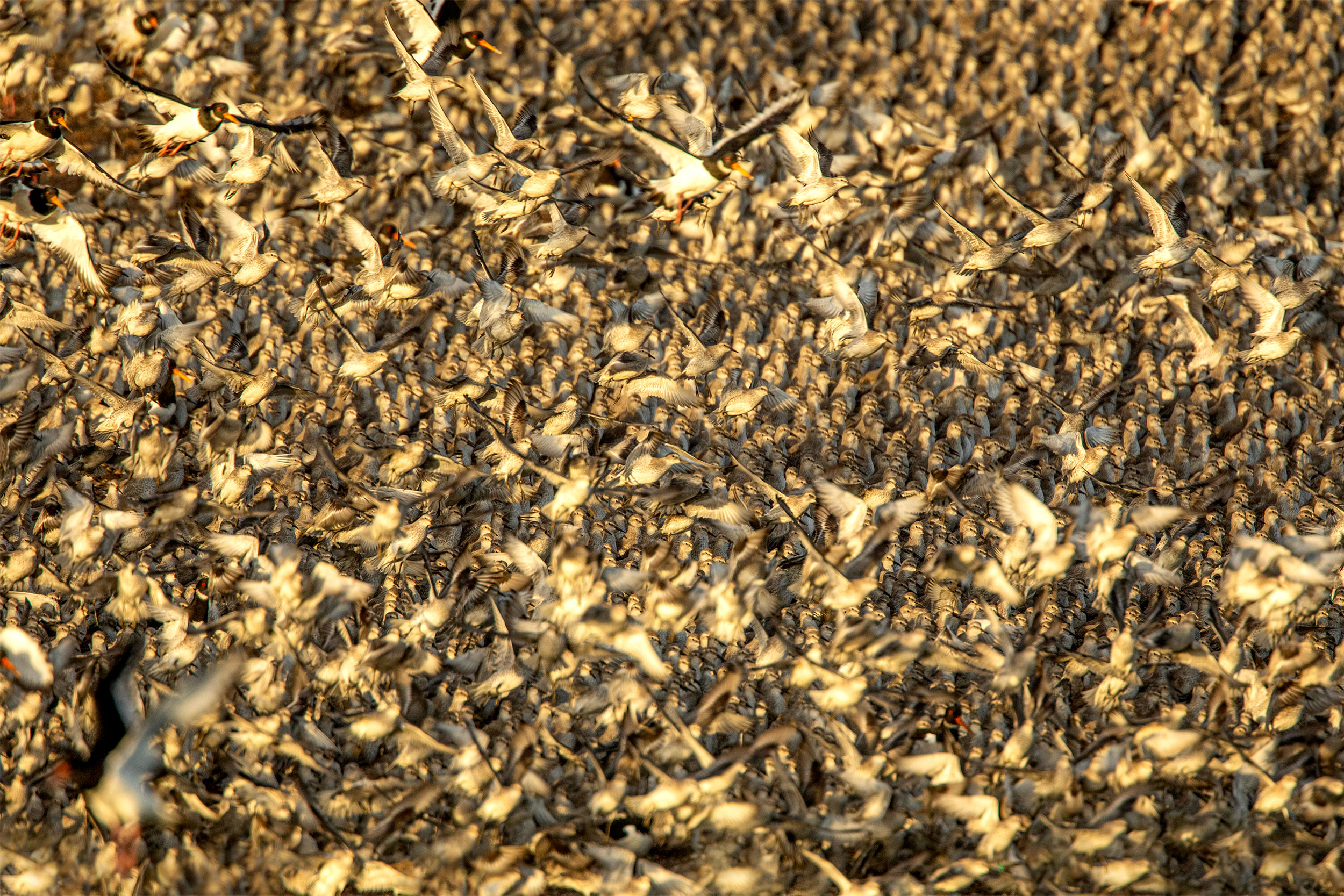Flock photography
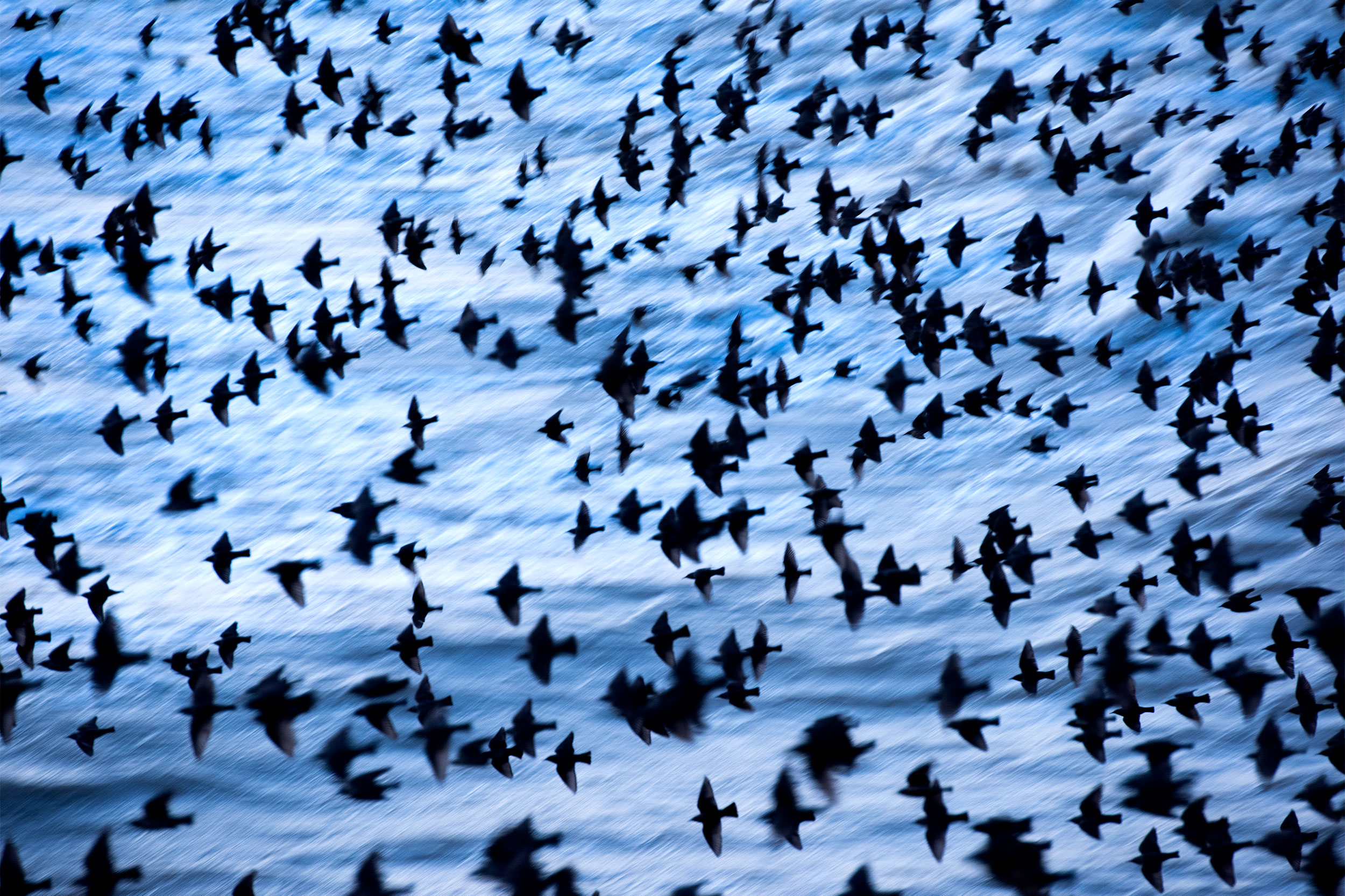
Starling murmuration. Photo: Ben Andrew (rspb-images.com)
Photographing flocks of birds can be challenging but fun. I’ve spent time photographing Starling murmurations, Rook roosts at dusk and large flocks of waders such as Knots swirling around in the sky and I never tire of seeing these spectacles. The good thing about flock photography is it usually allows you to try out different techniques. If you have a stunning sky for Starlings, be patient and wait for them to create the best shapes, or in low light at Rook roosts you can slow your shutter speed right down to highlight the birds’ movement.
Individual birds
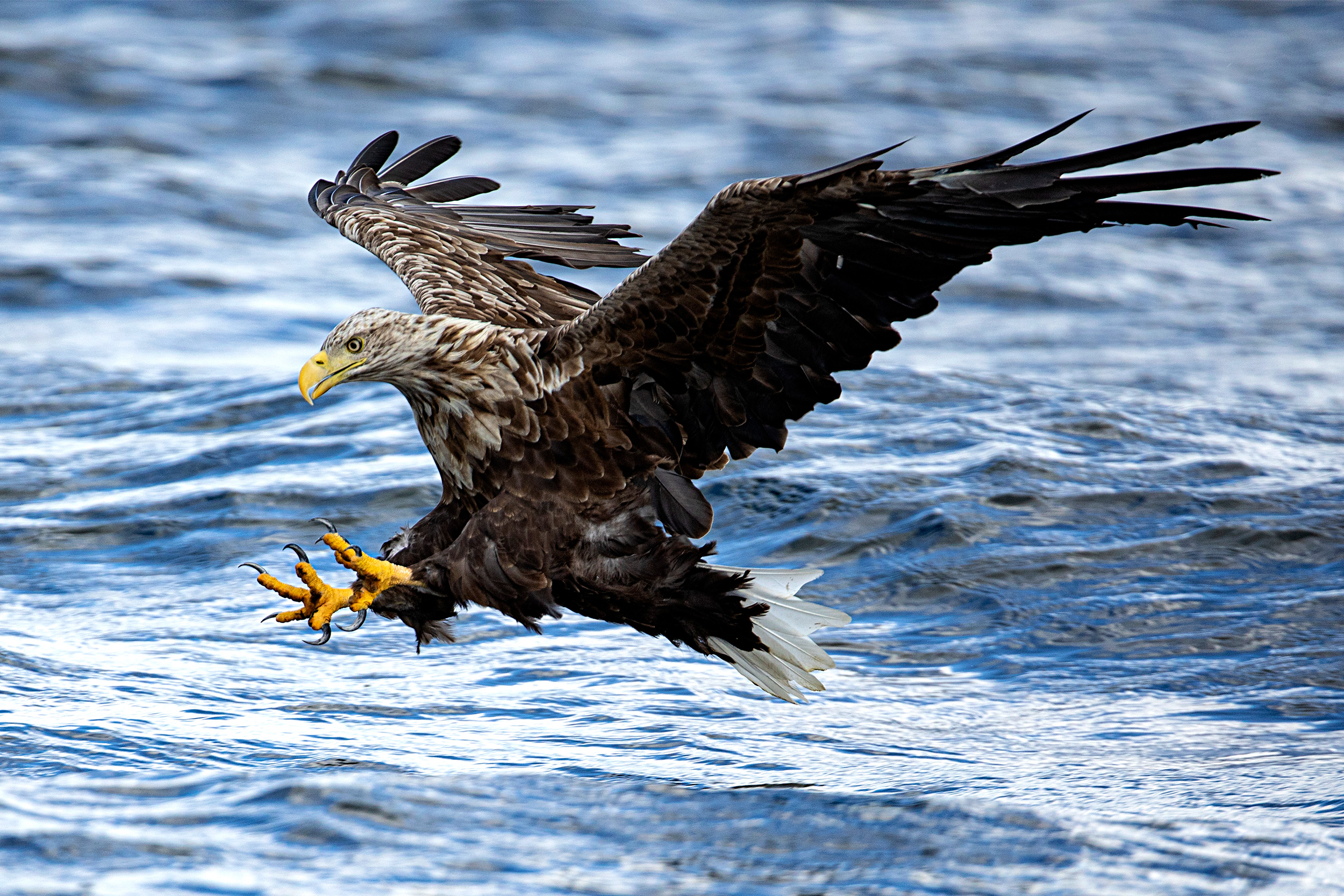
Diving White-tailed Eagle. Photo: Ben Andrew (rspb-images.com)
Modern technology is really helping photographers to capture birds in flight, but you still need to be able to read the behaviour of birds, to understand when they are about to take off and where they will be going so you know how to frame your shot. Most of my bird-in-flight shots – such as this one of a White-tailed Eagle – are of relatively slow-flying species where you can lock on at a distance and track them as they get closer and pass by you.
A higher shutter speed will make sure your shots are sharp. Consider your background too and play around with light.
Invertebrates in flight
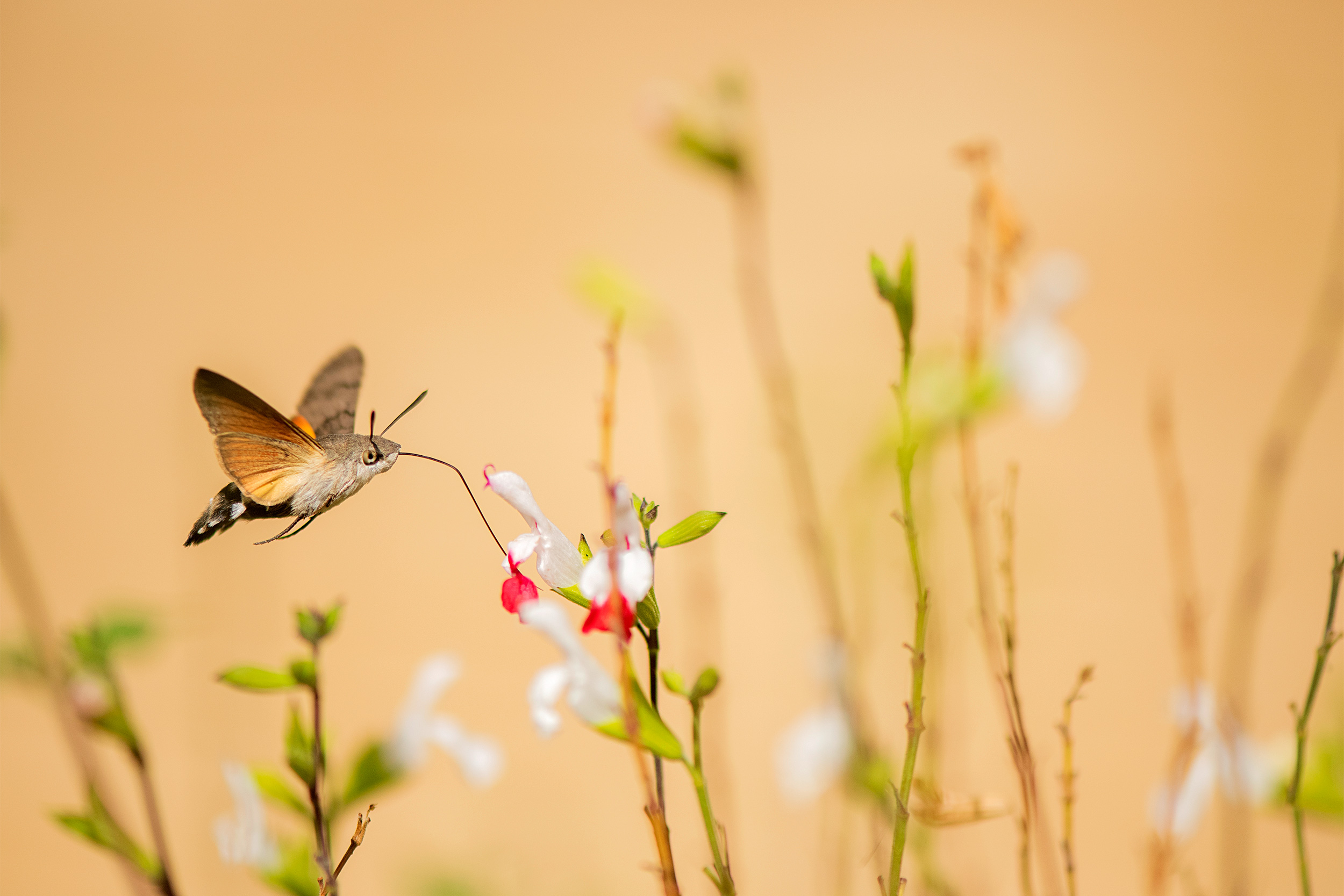
Hummingbird Hawk-moth feeding. Photo: Ben Andrew (rspb-images.com)
I’ve dabbled in some insect photography, and one species I’ve always found to be good to start with is the Hummingbird Hawk-moth. This day-flying moth has quite an erratic flight pattern as it moves between flowers, but it’s quite reliable in returning to the same flowers and, once feeding, hovers in the same place. I tend to pick a certain flower I know it visits and wait for it to come back. I get eye level so my background is diffused, make sure I have good light behind me and use a fast shutter speed and take as many shots as I can in the hope some are sharp!
You might also like
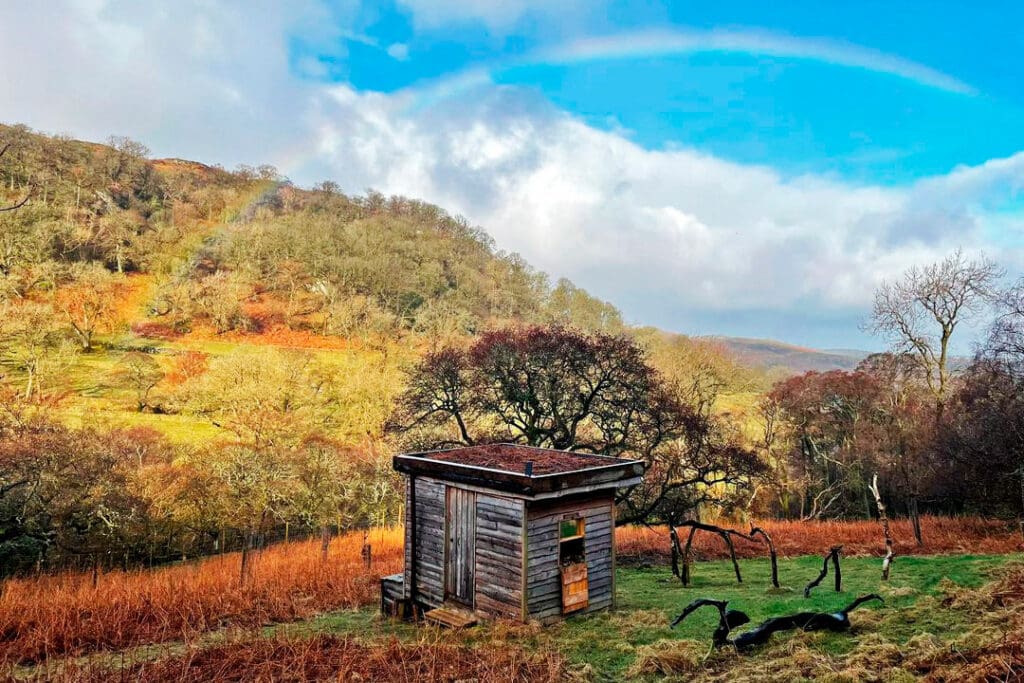
Get out there
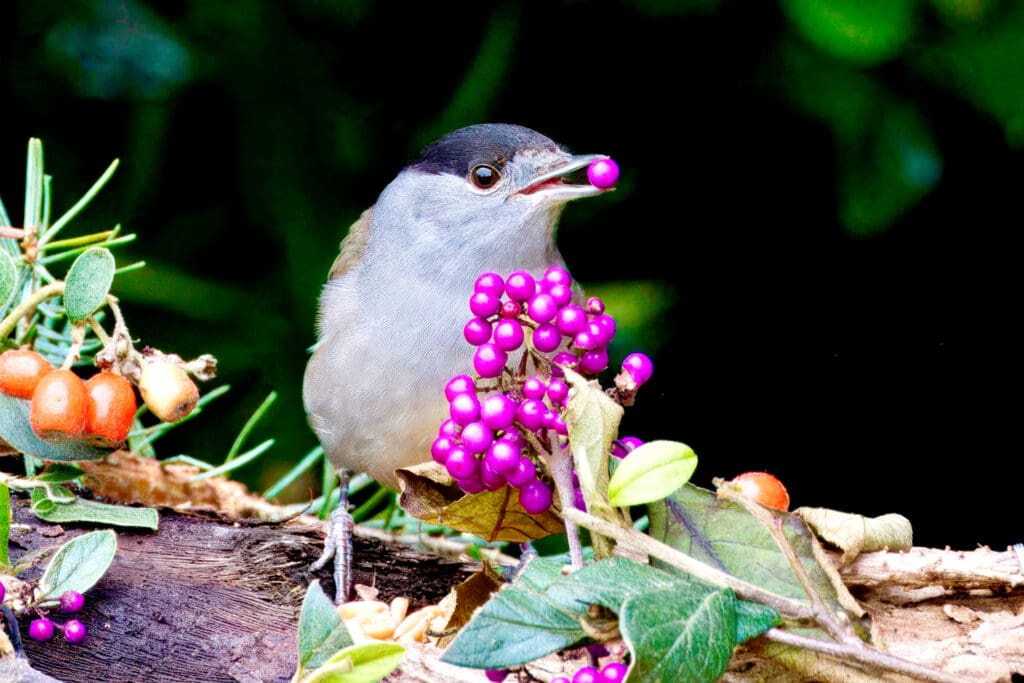
Your photos – spring/summer 2024


